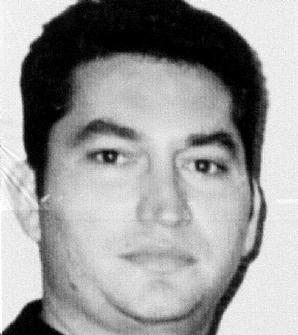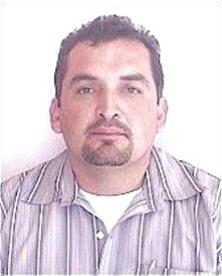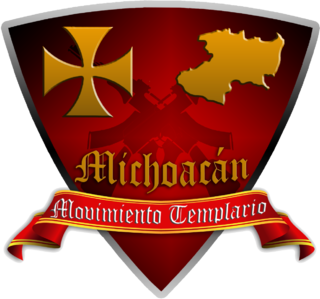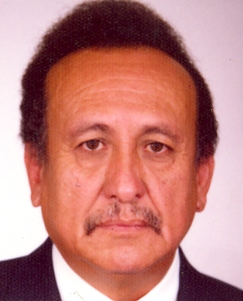
Michoacán, formally Michoacán de Ocampo, officially the Estado Libre y Soberano de Michoacán de Ocampo, is one of the 31 states which, together with Mexico City, comprise the Federal Entities of Mexico. The state is divided into 113 municipalities and its capital city is Morelia. The city was named after José María Morelos, a native of the city and one of the main heroes of the Mexican War of Independence.

Luisa María de Guadalupe Calderón Hinojosa is a Mexican politician affiliated with the National Action Party who served in the Senate of Mexico from 2000 until September 2006. She is currently senator-elect as a PAN proportional representative. Her term in the senate began in late 2012 and will continue through 2018. "Cocoa" is known as a champion for women and minority rights throughout Mexico.

The Mexican drug war is an ongoing asymmetric armed conflict between the Mexican government and various drug trafficking syndicates. When the Mexican military intervened in 2006, the government's main objective was to reduce drug-related violence. The Mexican government has asserted that their primary focus is dismantling the cartels and preventing drug trafficking. The conflict has been described as the Mexican theater of the global war on drugs, as led by the United States federal government.
Tiquicheo de Nicolás Romero is a municipality in the Mexican state of Michoacán. The municipality has an area of 1,429.65 square kilometres and is bordered to the north by the municipality of Tzitzio, to the east by Tuzantla and the state of México, to the south by San Lucas, Huetamo and the state of Guerrero, and to the west by Carácuaro and Madero. The municipality had a population of 13,665 inhabitants according to the 2005 census. Its municipal seat is the city of Tiquicheo.

The Morelia grenade attacks took place on 15 September 2008 on the occasion of the Mexican Independence Day anniversary when thousands of people were gathered in the Plaza Melchor Ocampo, the main square of the Mexican city of Morelia, Michoacán. Shortly after the Grito in that city, led by Governor Leonel Godoy, two grenades were thrown into the crowds, killing at least eight people and injuring more than 100.
The timeline of some of the most relevant events in the Mexican drug war is set out below. Although violence between drug cartels had been occurring for three decades, the Mexican government held a generally passive stance regarding cartel violence through the 1980s and early 2000s.

La Familia Michoacana, La Familia, is a Mexican drug cartel and organized crime syndicate based in the Mexican state of Michoacán. They are known to produce large amounts of methamphetamine in clandestine laboratories in Michoacan. Formerly allied to the Gulf Cartel—as part of Los Zetas—it split off in 2006. The cartel was founded by Carlos Rosales Mendoza, a close associate of Osiel Cárdenas. The second leader, Nazario Moreno González, known as El Más Loco, preached his organization's divine right to eliminate enemies. He carried a "bible" of his own sayings and insisted that his army of traffickers and hitmen avoid using the narcotics they produce and sell. Nazario Moreno's partners were José de Jesús Méndez Vargas, Servando Gómez Martínez and Enrique Plancarte Solís, each of whom has a bounty of $2 million for his capture, and were contesting the control of the organization.

Nazario Moreno González, commonly referred to by his alias El Chayo and/or El Más Loco, was a Mexican drug lord who headed La Familia Michoacana before heading the Knights Templar Cartel, a drug cartel headquartered in the state of Michoacán. He was one of Mexico's most-wanted drug lords.
Dionisio Loya Plancarte is a Mexican drug lord and high-ranking leader of the Knights Templar Cartel, a quasi-religious criminal organization based in the state of Michoacán. He is the uncle of Enrique Plancarte Solís, another former high-ranking leader of the cartel. Since 2009, he was listed as one of Mexico's 37 most-wanted drug lords, with a $30 million pesos bounty for information leading to his capture. He was arrested by the Mexican Army in Morelia, Michoacán on 27 January 2014.
Arnoldo Rueda Medina is a former Mexican drug lord and high-ranking leader of La Familia Michoacana, a drug trafficking organization which is based in Michoacán, Mexico.

Enrique Plancarte Solís was a Mexican drug lord and high-ranking leader of the Knights Templar Cartel, a drug cartel headquartered in the state of Michoacán. Prior to his tenure in the Knights Templar, he was a top leader of the split-off group La Familia Michoacana.
This is a list of events that happened in 2009 in Mexico. The article also lists the most important political leaders during the year at both federal and state levels.

Carlos Alberto Rosales Mendoza was a former Mexican drug lord who founded and led an organized crime syndicate called La Familia Michoacana. He was a close friend and associate of Osiel Cárdenas Guillén, the former leader of the Gulf Cartel.
This is a list of events that happened in 2011 in Mexico. The article also lists the most important political leaders during the year at both federal and state levels.

The Knights Templar Cartel was a Mexican criminal organization originally composed of the remnants of La Familia Michoacana drug cartel based in the Mexican State of Michoacán.

Fausto Vallejo y Figueroa is a Mexican lawyer, politician, a member of the Institutional Revolutionary Party (PRI), a and former governor of Michoacán. He has served three times as mayor of Morelia, Michoacán. On June 18, 2014, he announced he was stepping down as governor to take care of his health.
This is a list of events that happened in 2012 in Mexico. The article also lists the most important political leaders during the year at both federal and state levels.

José Antonio García Apac, also known as "El Chino", was a Mexican journalist and editor for the Ecos de la Cuenca in Tepalcatepec, Michoacán, Mexico, when he disappeared 20 November 2006. He is best known for the news stories he published on the violent relationship between the drug cartels in his home state and its authorities.

Grupos de autodefensas or Policía Comunitaria or Policía Popular are vigilante self-defense groups that arose in the Gulf of Mexico and South Mexico regions between 2012 and 2013. The Mexican government has attempted to monitor and absorb these groups into the federal government to act as Rural Police in order to avoid clashes between the paramilitaries and the Mexican Armed Forces itself.












